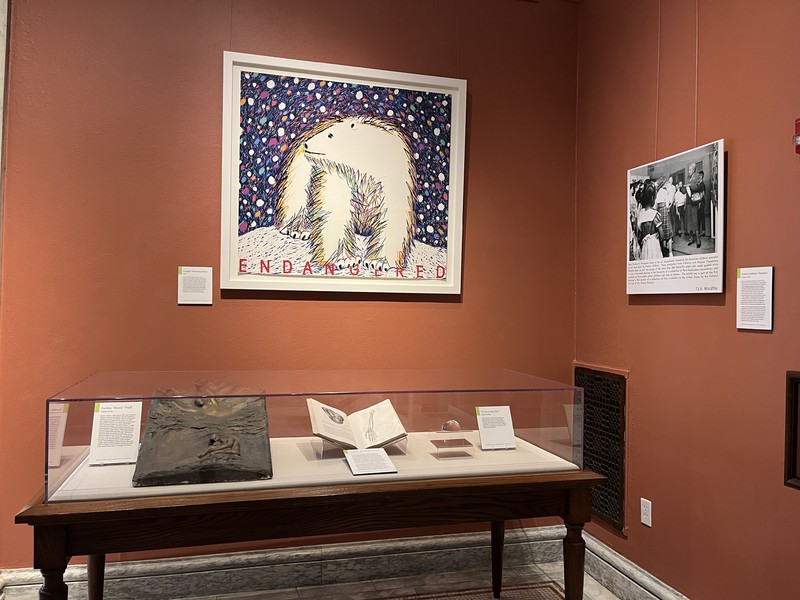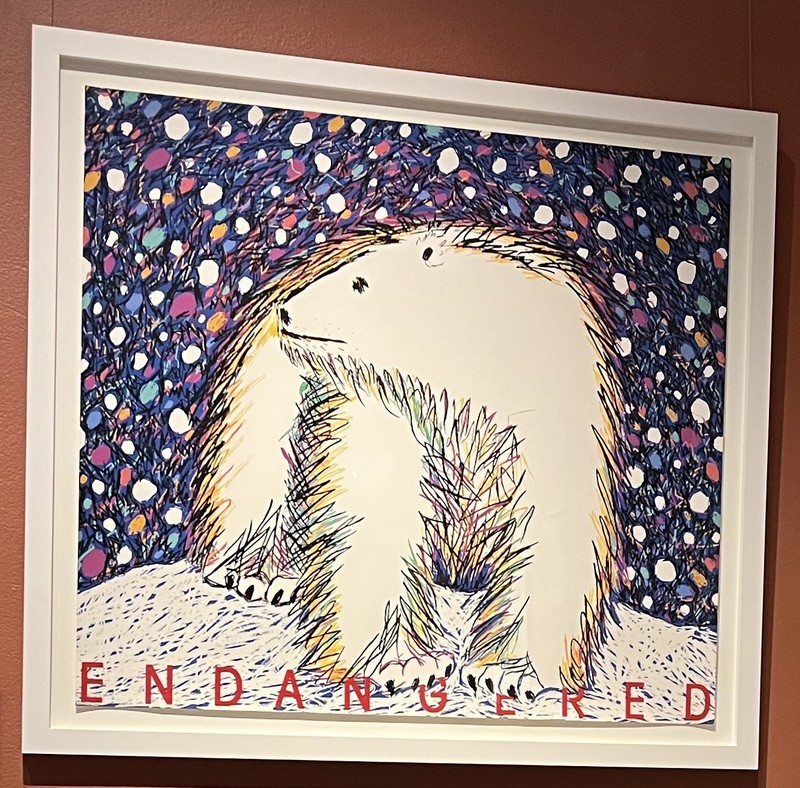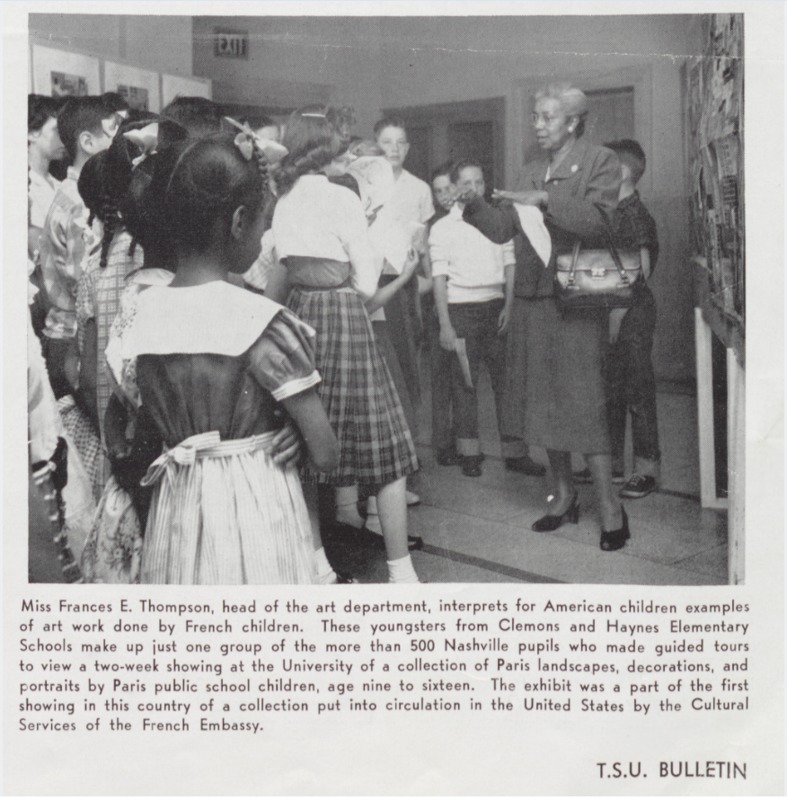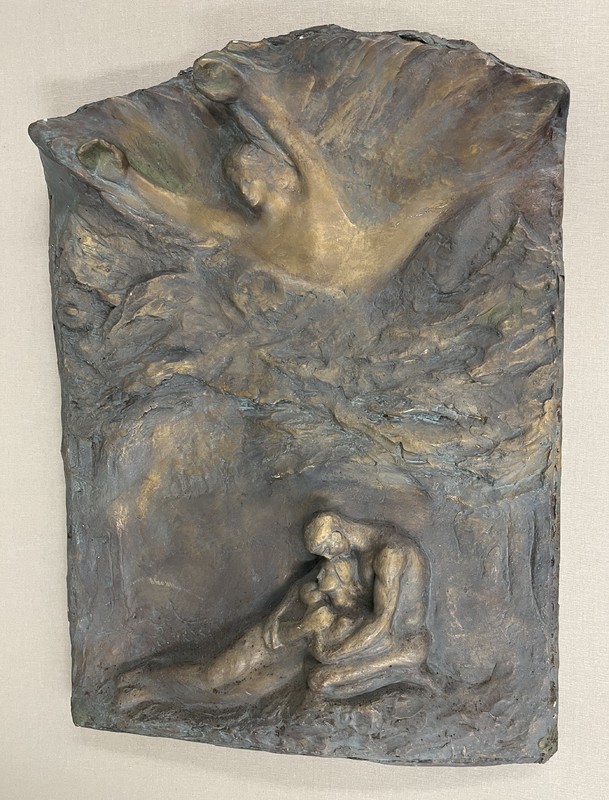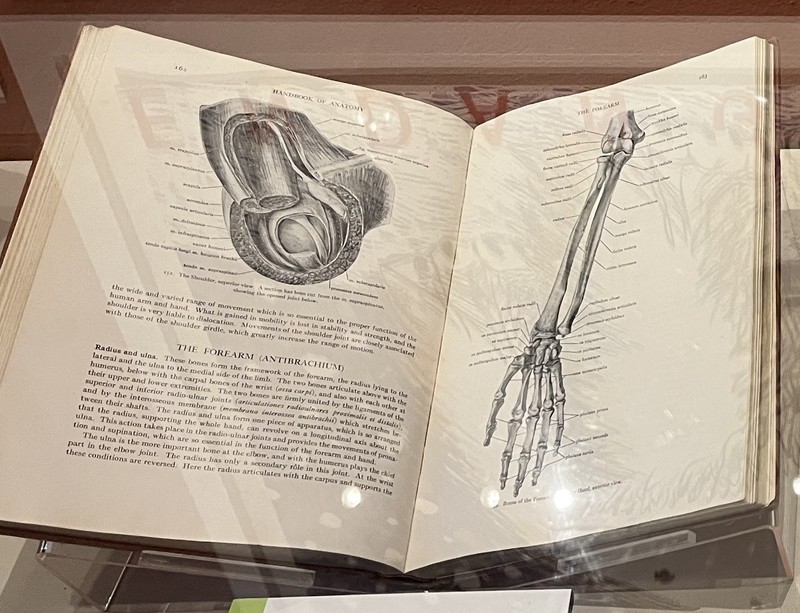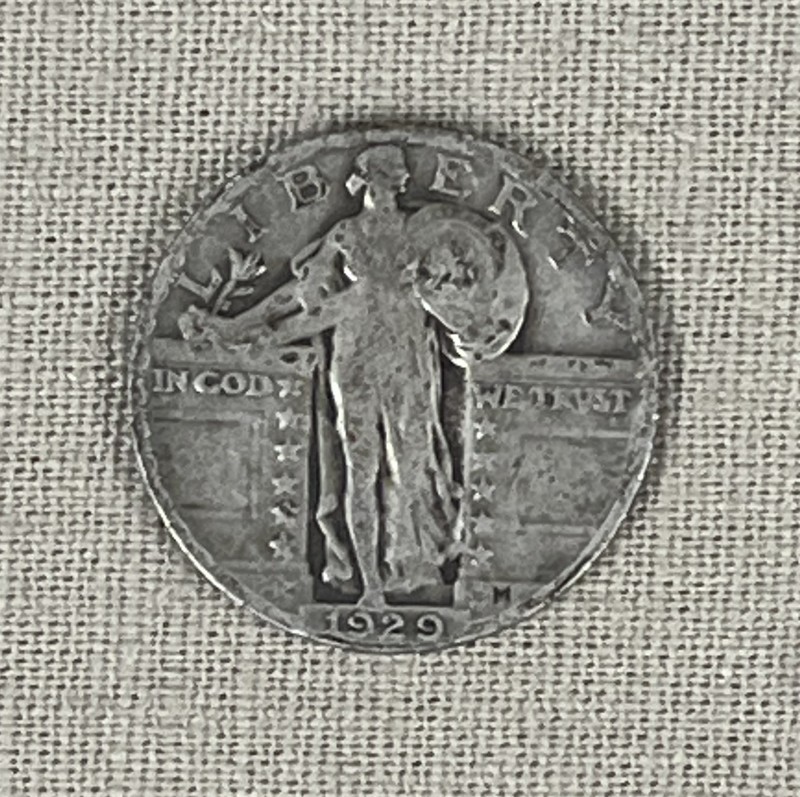Display 2
The Graphic Workshop began in 1970 as a response to the national student strike at Kent State University and Jackson State University, where six students were killed while protesting the U.S. invasion of Cambodia. Between 1970 and 1992 the artists of the Graphic Workshop created hundreds of silkscreen posters. Many were about politics, war, racism, public health and endangered species. Faculty member and co-founder Rob Moore described the Graphic Workshop as a “visual propaganda unit” supported by “blood, sweat, and friendship.”
Frances Euphemia Thompson, class of 1923, built a 47-year career teaching art to young Black women and men who would bring art instruction to the segregated schools of rural Tennessee. Thompson attended high school at Tennessee Agricultural and Industrial State Normal School (now Tennessee State University) where she met her mentor, Olive Gorane Taliaferro, a Massachusetts Normal Art School alumna, Class of 1915. Taliaferro would influence Thompson to attend MNAS, and Thompson would earn her diploma and later, a bachelor’s degree from Massachusetts School of Art. She received her Master of Arts in Teaching from Radcliffe in 1945. In 1943, the Tennessee Department of Education published her book Art in the Elementary Schools: A Manual for Teachers, to help teachers create art programs in segregated schools. She taught at TSU from 1923 to 1969. TSU’s seal was designed by Thompson, as were many of the bas-reliefs decorating several of the school’s buildings. Thomson’s other notable artwork includes drawings, oil paintings, and murals.
Bashka “Bessie” Paeff, class of 1911, was a sculptor whose work included realistic animal sculptures, portraits and war memorials. She was nicknamed the “Subway Sculptor” for her work in the Park Street MBTA Station. At 22, Paeff won a commission from the state of Maine to create a World War I memorial. Her design, “Sacrifices of War,” is a large relief sculpture depicting a mother protecting her child from the ravages of war. Newly-elected Maine Governor Ralph Owen Brewster was apprehensive about the feminist, pacifist message, and tried to derail the effort in favor of another of her works, “Glories of Peace." She prevailed with the help of the previous governor, and “Sacrifices of War” was dedicated in 1926. Some of Paeff’s notable works located in Boston include “Boy with a Bird” in Boston Public Garden and a bronze relief of Dr. Martin Luther King, Jr. at Boston University.
Hamlet Frederick Aitken earned his Certificate in Elementary Drawing in 1895, and became a successful artist and medical illustrator. He worked with leading figures of American surgery and anatomy, including Harvard Medical School anatomy professor John Warren. Aitken illustrated more than 400 depictions of medical procedures for Warren’s Handbook of Anatomy to accompany descriptions of dissections. Their collaboration ended with a topographical atlas and handbook for dissection to train generations of doctors around the globe. Harvard University Press published five editions of the Handbook of Anatomy between 1930 and 1972, with the 1944 edition displayed here.
In the spirit of the Aitken/Warren partnership, in 2022 MassArt embarked on an initiative with Brigham and Women’s Hospital called the Medical Inclusion and Diversity Art Program. It is aimed at promoting diversity and representation of all kinds (race, ethnicity, gender identity, ability, and socioeconomic status) in the illustrations and visual artwork used in medical books, scientific literature, training, and patient engagement activities.
In the spirit of the Aitken/Warren partnership, in 2022 MassArt embarked on an initiative with Brigham and Women’s Hospital called the Medical Inclusion and Diversity Art Program. It is aimed at promoting diversity and representation of all kinds (race, ethnicity, gender identity, ability, and socioeconomic status) in the illustrations and visual artwork used in medical books, scientific literature, training, and patient engagement activities.
Herman MacNeil, class of 1886, designed the Standing Liberty Quarter, which circulated between 1916 and 1930. His original design showing a bare-breasted Liberty offended the sensibilities of some, and U.S. Treasury officials asked him to redesign the coin, this time with Liberty modestly attired.
